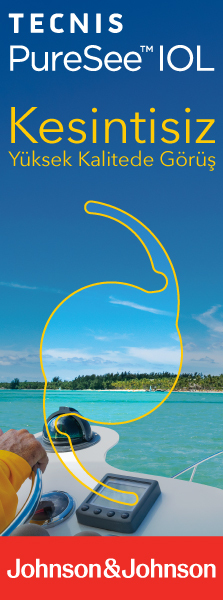2M.D. Professor, Sakarya Training and Research Hospital, Eye Clinic, Sakarya/TURKEY Objective: To evaluate the surgical technique, intraoperative and postoperative complications in eyes with posterior polar cataract.
Material and Methods: Medical records of 38 eyes of 30 patients with posterior polar cataract who underwent phacoemulsification surgery, between January 2011 and January 2014, were evaluated retrospectively. Chip-flip technique was carried out in all eyes. Preoperative and postoperative visual acuity, applied surgical technique, intraoperative and postoperative complications were evaluated.
Results: The mean age of the 18 males and 12 females was 39.6 (22-61) years. Eight patients underwent surgery in both eyes. Posterior capsule rupture occured in 13 of 38 eyes (34.2%) during the removal of posterior plaque and 7 eyes (18.4%) underwent anterior vitrectomy because of vitreous loss. Sulcus intraocular lens implantation was applied in 8 eyes. Capsular bag implantation was achieved in 30 eyes. Postoperative visual acuity was between 0.5-1.0 in eyes with posterior capsule defect and 0.7-1.0 in eyes with intact capsule. Temporary intraocular pressure increase (5 eyes) and cystoid macular edema (1 eye) occured as postoperative complications.
Conclusions: Despite the higher incidence of posterior capsule defect and vitreous loss in posterior polar cataracts, careful surgical technique yields satisfactory visual outcomes.
Keywords : Posterior polar cataract, posterior capsule rupture, phacoemulsification




